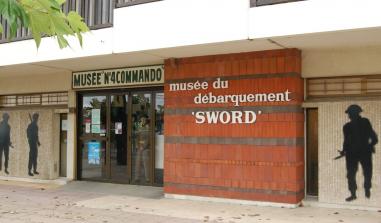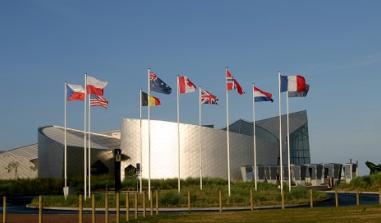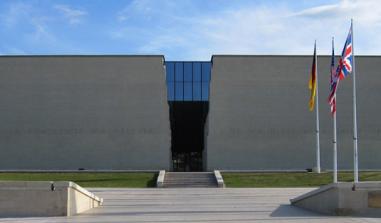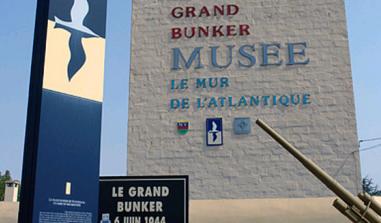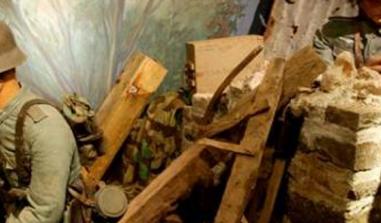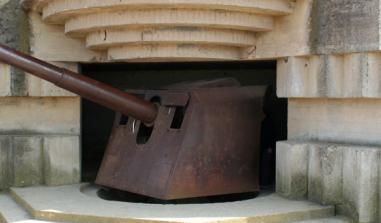Urville - Langannerie Polish Military Cemetery
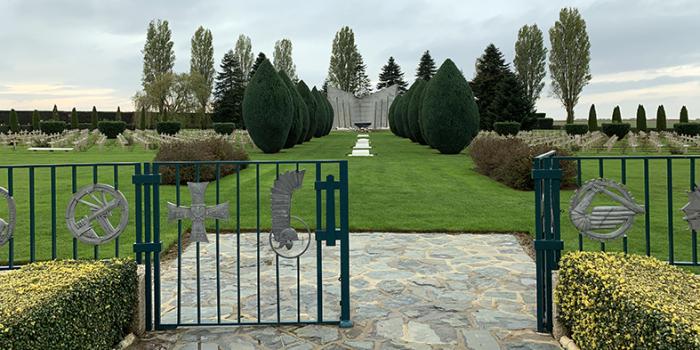
Nécropole nationale polonaise d’Urville - Langannerie. © Guillaume Pichard
Pour accéder au panneau d'information de la nécropole, cliquer ici 
Inaugurated in October 1946, this cemetery contains the tombs of 615 Polish soldiers killed in the battles for the liberation of France in 1944. Most of the fallen belonged to the Polish 1st Armoured Division under General Maczek, but some were also killed during the Battle of France in 1940 or during the Occupation.
Polish 1st Armoured Division
With the consent of the British government, the Polish 1st Armoured Division was created on 26 February 1942, on the orders of General Sikorski, head of the Polish government in exile in London. It initially consisted of contingents that had fought in the Polish army in Poland and France, together with Polish volunteers from all over the world.
The division was integrated in the allied military forces that would later serve on the Western Front. Commanded by General Maczek, the division landed in Normandy at the end of July 1944 and was attached to First Canadian Army, II Canadian Corps.
On 8 August 1944, the Polish 1st Armoured Division joined combat when it was deployed to the south of Caen as part of the 2nd phase of Operation Totalise, which aimed to take the city of Falaise. Since the losses were heavy, and the attacks ineffective, this operation was stopped and replaced by a new operation, codenamed Tractable. The aim of this second operation was to attempt to fully surround the German 7th Army by the combined allied forces in Normandy. From 15 to 18 August, the Polish 1st Armoured Division liberated several towns and villages in Calvados and Orne after heavy fighting.
From 19 to 22 August, the SS divisions tried to destroy the Polish units located on the ridge of Mont Ormel (“Hill 262”), in an attempt to force open an escape corridor from their encirclement. The Polish 1st Armoured Division also had to face the attacks of the 2nd SS Panzer Division, which had managed to escape the encirclement and was now attempting to assist the other German units trapped in the Falaise “pocket”. The Poles had to hold their position at all costs until the arrival of reinforcements. On 21 August, they were finally joined by the Canadian 4th Armoured Division. The “Falaise-Chambois pocket” was finally closed. This victory was won at the cost of bloody battles and heroic resistance.
During the Battle of Normandy, the Polish 1st Armoured Division lost more than 2,000 men, either killed or wounded. The division then took part in the liberation of northern Belgium, southern Netherlands and Germany.
Specific features of the Polish Military Cemetery
By decree dated 19 May 1945, the Prefect of Calvados permitted the Canadian authorities to create a Polish military cemetery on land belonging to the Grainville-Langannerie municipality. Up to 1949, the British Imperial War Graves Commission was responsible for maintaining the cemetery, before handing over to the French State.
The cemetery consists of eight plots containing graves aligned in rows. These plots do not all have the same number of rows, but each row comprises twelve graves. With the exception of two graves, on which three crosses symbolize the tombs of respectively seven and five bodies of pilots killed in the crash of their plane. Their remains could not be separated.
Originally, the crosses were made of metal. In May 1954, as the 10th anniversary of the Battle of Normandy was approaching, the French State decided to replace them with concrete crosses ornamented with plaques bearing the identity of the deceased, on the model of the French national cemeteries. The central monument was inaugurated in August 1954 in the presence of generals Maczek and Anders.
This Polish Military Cemetery is one of the seven foreign military cemeteries in France maintained by the French State.
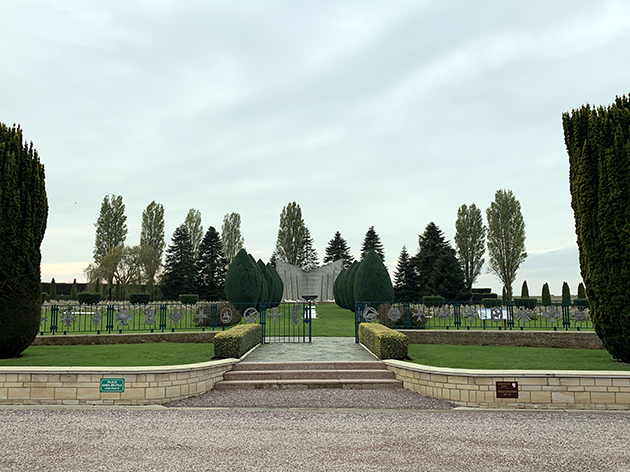
Nécropole nationale polonaise d’Urville - Langannerie. © Guillaume Pichard
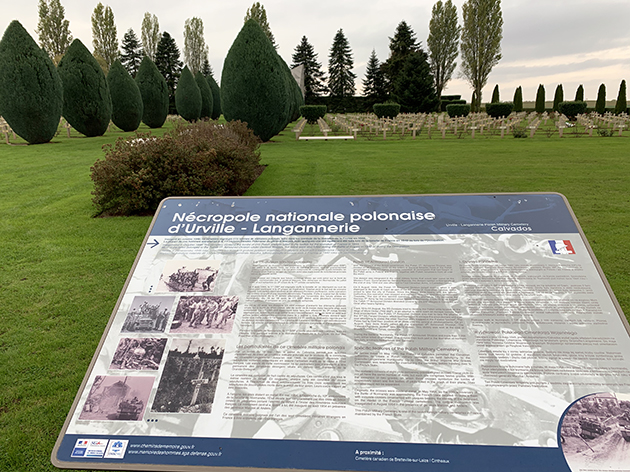
Nécropole nationale polonaise d’Urville - Langannerie. © Guillaume Pichard
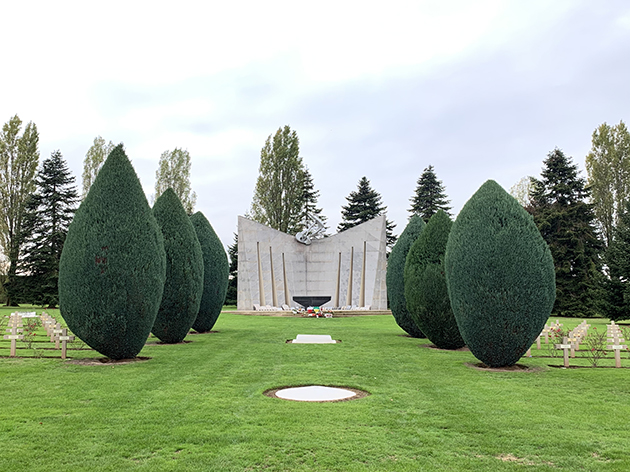
Nécropole nationale polonaise d’Urville - Langannerie. © Guillaume Pichard
Nécropole nationale polonaise d’Urville - Langannerie. © Guillaume Pichard
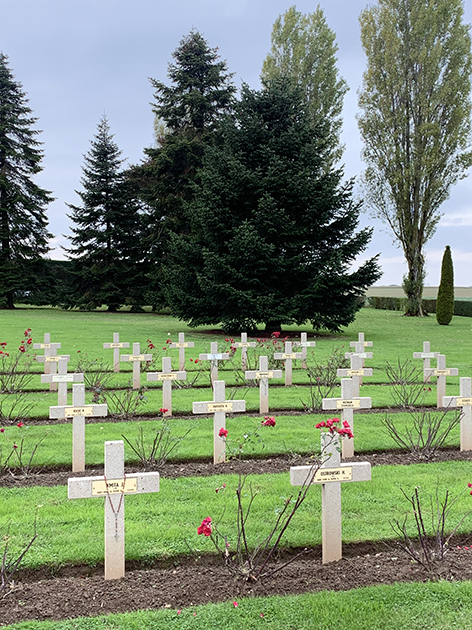
Nécropole nationale polonaise d’Urville - Langannerie. © Guillaume Pichard
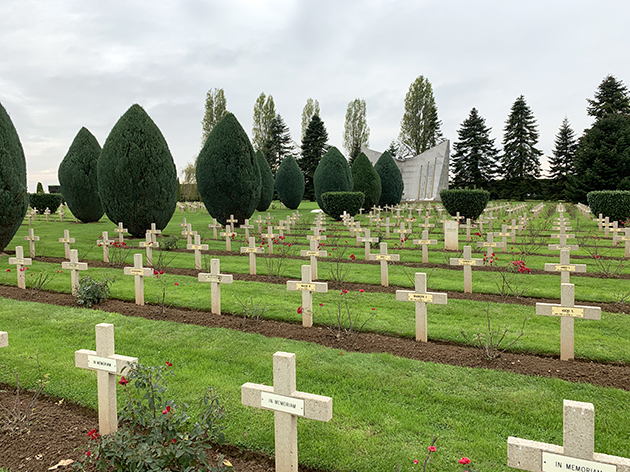
Nécropole nationale polonaise d’Urville - Langannerie. © Guillaume Pichard
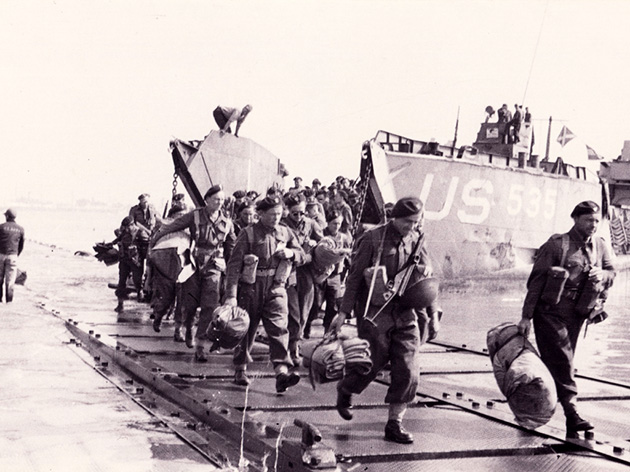
Débarquement des troupes polonaises en Normandie. © Fonds Charles Steven
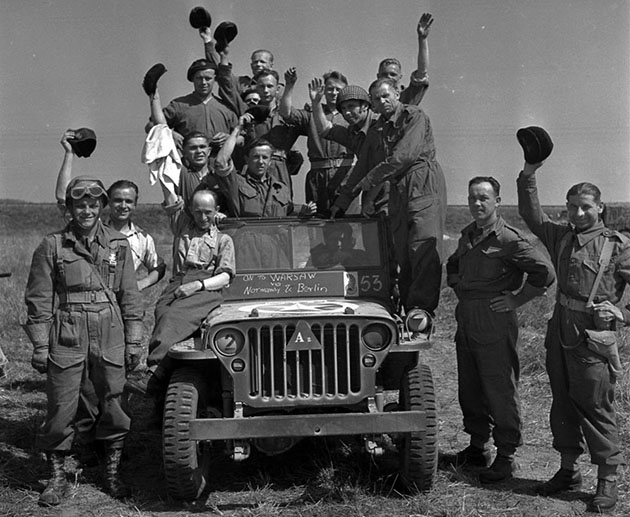
Soldats polonais en Normandie en août 1944. © Bibliothèque et Archives Canada/Fonds du ministère de la Défense nationale/a074094
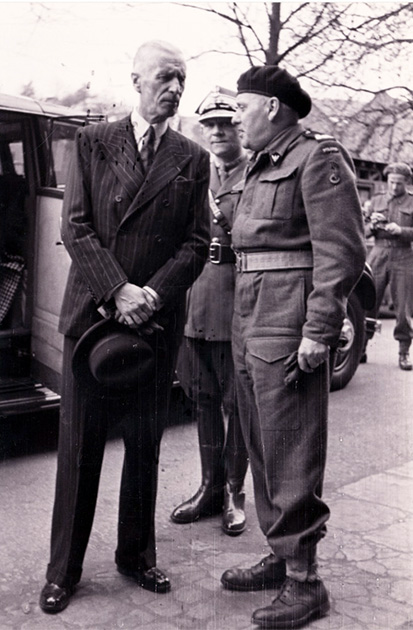
Le président de la République de Pologne en exil, Wladyslaw Raczkiewicz s'entretient avec le général Maczek. © Fonds Charles Steven
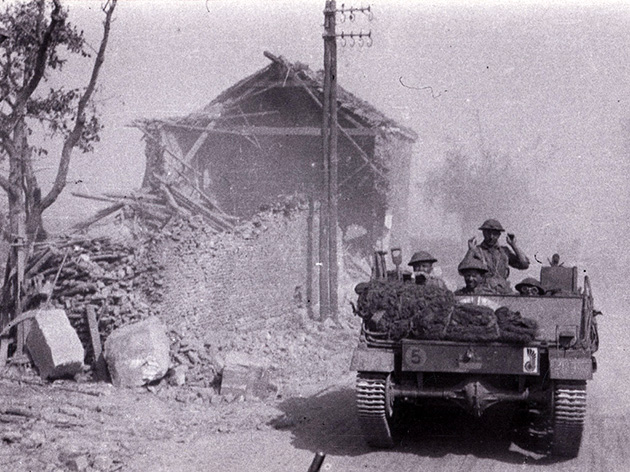
Poche de Chambois, la 1re division blindée polonaise en marche. © Fonds Charles Steven
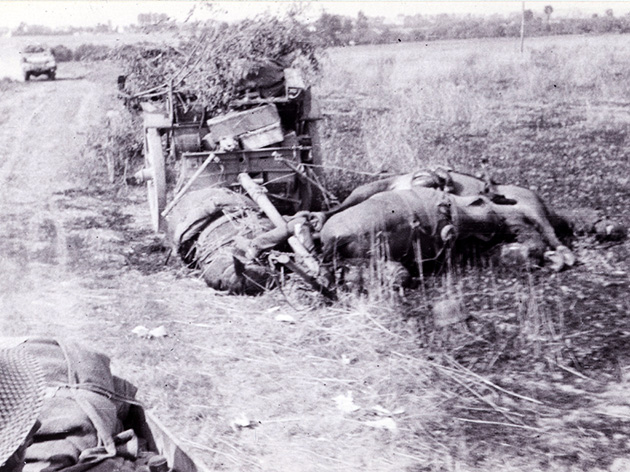
Cadavres et épaves de chariots allemands après les combats, Poche de Chambois, août 1944. © Fonds Charles Steven
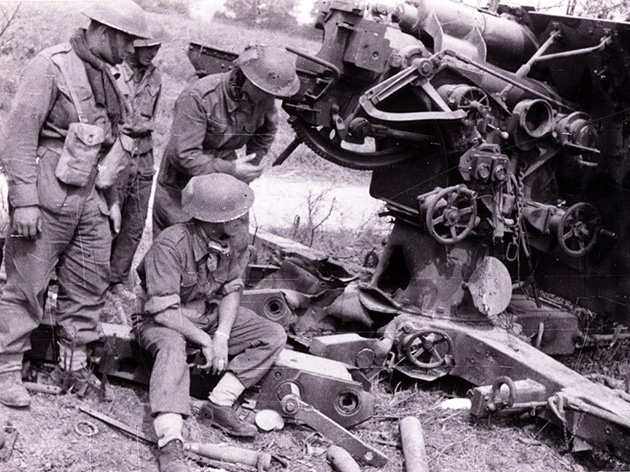
Soldats polonais inspectant une pièce d'artillerie allemande, Poche de Chambois, août 1944. © Fonds Charles Steven
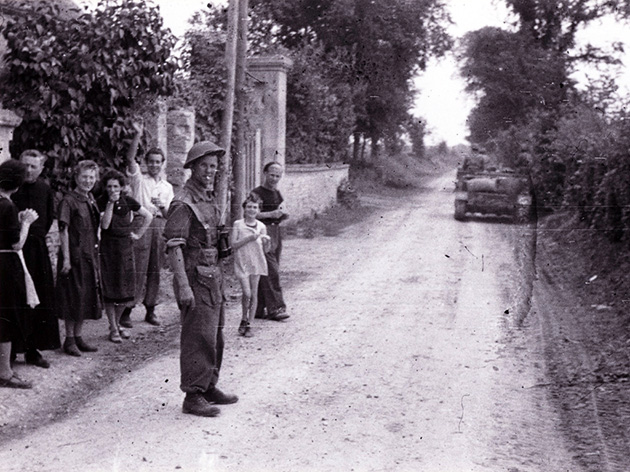
Civils normands saluant les troupes polonaises. © Fonds Charles Steven
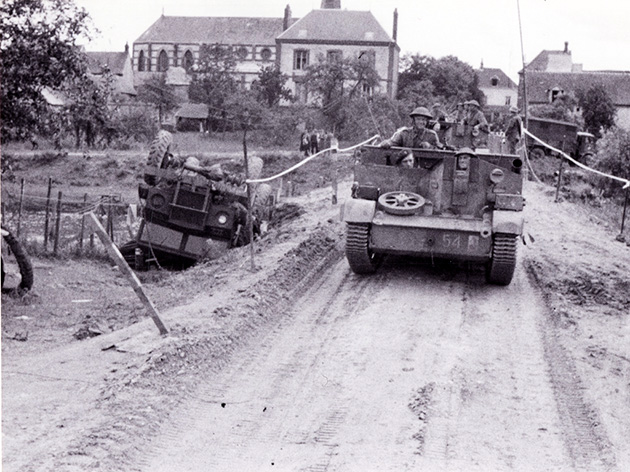
Des Bren carriers de la 1re division blindée polonaise traversent un village normand. © Fonds Charles Steven
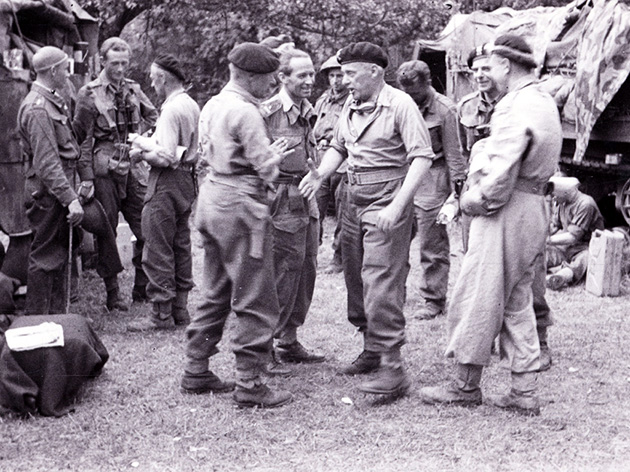
Le général Maczek saluant des officiers. © Fonds Charles Steven
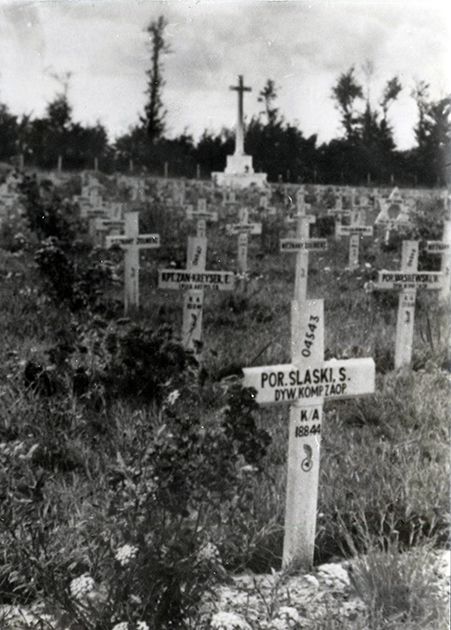
Le cimetière dans les années 1950. © ONACVG
Practical information
Urville
Visites libres toute l’année


